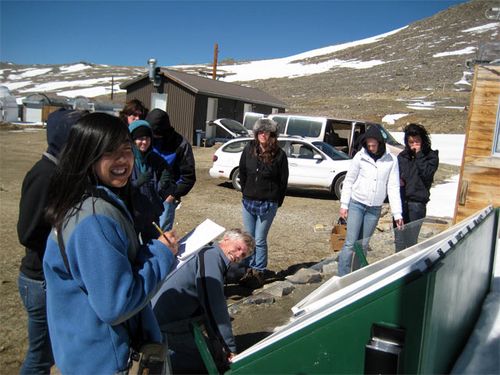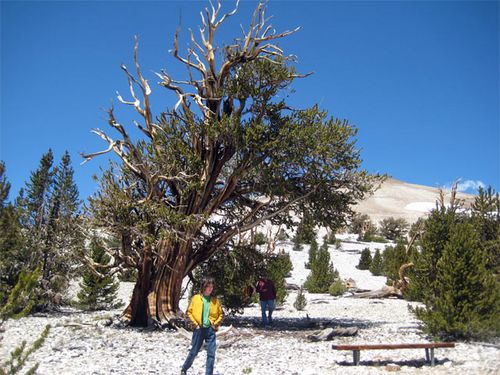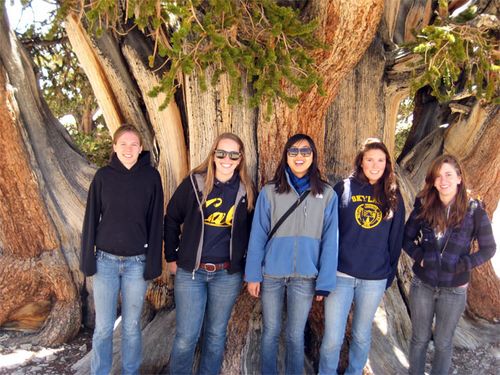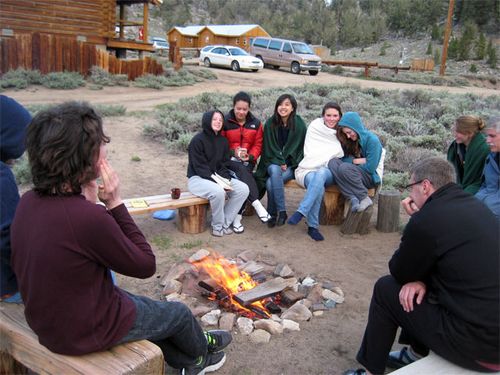Back in the USA, I had to hit the ground running.
There were two weeks of school left, including final exams and graduation. My substitute teacher, Mr. Lazlo Toth, had done an awesome job of executing my lesson plans while I was gone. He is a retired high school teacher himself, and he really knows his stuff. I could not leave my school for this long without his expertise. THANK YOU, Lazlo.
It is impossible to overstate how much this trip has affected me. I wrote in my previous post about the importance to the modern world of doing this kind of research. In the end it comes down to that old adage "Those who cannot remember the past are condemned to repeat it.”
What about its importance to me personally, and to my students? I have learned that there is no substitute for field work. Being there, working with your hands and head on location, makes everything you learn come alive in a visceral way. Book and internet learning can never compare with it. We are physical creatures, and need to experience learning in a physical and site-specific way for it to feel completely real.
(It often occurred to me that as we studied Finnish hunter-gatherers we were in some ways acting like hunter-gatherers as well. We spent a lot of our time surveying the backwoods, kneeling in the dirt, sitting around a wood fire, even picking and eating last year’s berries, and always we were searching for something.)
I can’t take all of my students to Finland with me, but I can take some of them into the field. We have an ongoing research project at 14,000-foot White Mountain Peak near the California/Nevada Border. It is the highest altitude school garden in America. In fact, it’s the highest garden in America, period. Plus, it is just a few miles away from the Ancient Bristlecone Pine Forest, which includes the oldest trees in the world.


So, a week after school let out, eight Drake students, two teachers and one parent volunteer paid another visit to our little project. We downloaded temperature and humidity data, repaired our facility, and planted some lettuce, radishes and flowers for another growing season. We are also going to study twisting in bristlecone pines, and to deploy artificial hypoliths.


Taking student s to White Mountain Peak is one way I give them what I’ve experienced, but it’s not the only way. Last March I spent a week in the Mojave Desert with a NASA program called Spaceward Bound. In 2010 I hope to return with a student or two. In fact, my Finland expedition’s leader Professor Ezra Zubrow and I have even discussed the possibility of taking a high school student or two on one of his future digs! That would be unimaginably cool, and would have an impact on all the students in our school. It’s by no means a sure thing, but I am going to work to make it happen.


Did I say work? I am already behind on a reflection essay, a classroom implementation strategy, an outreach strategy, and several lesson plans that I owe to the PolarTREC Program. Professor Zubrow and I are going to write a journal article or monograph on our outreach experiences. We’ll look for funding to continue our collaboration. I’ll probably visit his lab. That’s why I think this adventure isn’t half over yet.
I learned upon my return that I had been awarded the$10K 2009 Amgen Award for Science Teaching Excellence **by the Amgen Corporation. I also got a grant from the **Toshiba America Foundation. That means I have some cash to return to White Mountain Peak (and other places?) with more students in the years to come.
But for now, I need to stay home for a while. All this traveling has taken a toll on my family.


Comments